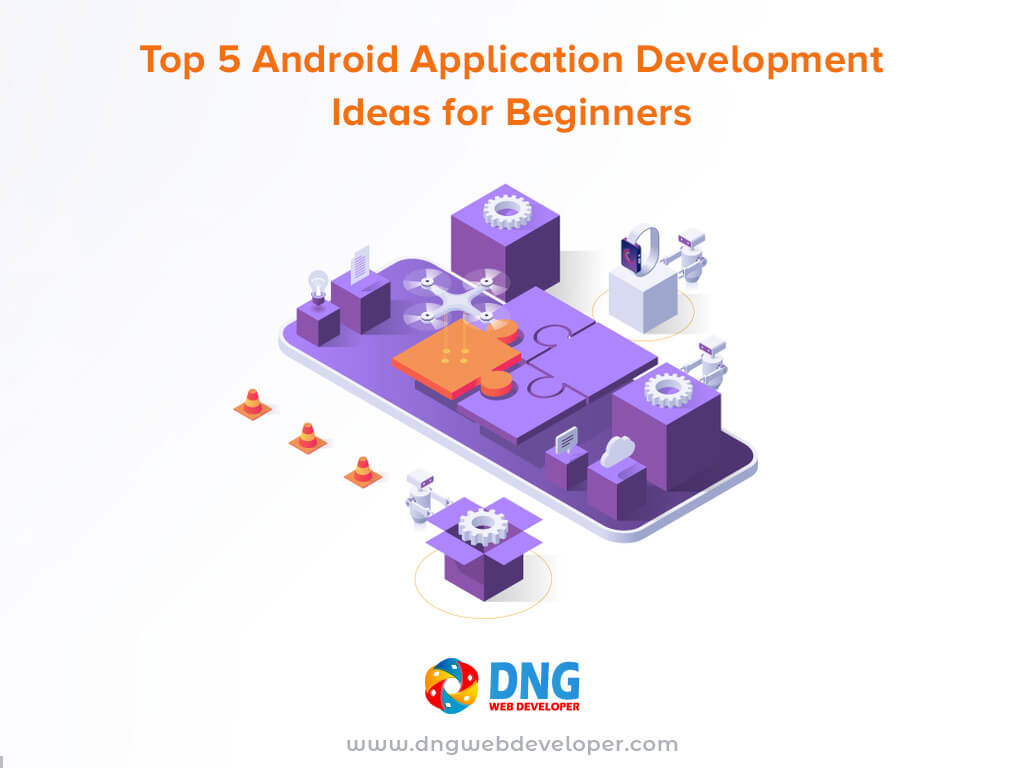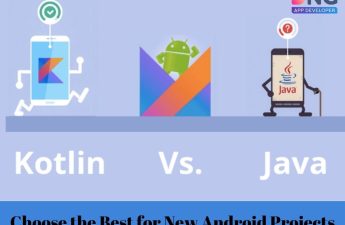It is essential for ambitious developers to work on their own projects when it comes to jobs in software development. Real-world projects are the best approach to refine your talents and turn theoretical knowledge into actual experience.
Third-party applications, which account for the vast bulk of applications on Android smartphones, are supported. These third-party programmes can be accessed and downloaded via Google’s PlayStore. The PlayStore contains a wide variety of apps, including banking, mHealth, product delivery (food/beauty/health & wellness/electronics, etc.), fitness, entertainment, content, and much more. The more you try with various android application projects, the more you will learn.
Naturally, android application is a wonderful environment for practising your coding and software Development development skills, particularly for novices. We’ve compiled a selection of unique and fascinating Android project ideas for you in this post!
So, here are a few android application projects for novices to try:
This list of android project ideas for students is appropriate for beginning, intermediate, and advanced students. These android projects will get you started with all of the basics you’ll need to be a successful android developer.
Additionally, if you’re looking for Android project ideas for your senior year, this list should get you started. So, without further ado, let’s get right into some android application projects that will help you build your foundation and climb the ranks. Here are some Android project ideas that will get you started in the correct path.

Top 5 Android Application Development Ideas:
Android Bluetooth-based Chatting App
Working on an Android-based talking app is one of the greatest ways to begin exploring with hands-on Android projects for students. Bluetooth technology is good for facilitating low-cost wireless communication. Bluetooth is now included into every android application handset for wireless connection. In this project, you will use Android’s open-source API to create a Bluetooth-based chatting application that can establish a Bluetooth connection between smartphones to ease message exchange.
For security reasons, you will need to pair the Bluetooth-enabled devices before using the Bluetooth communication site when building this project. An RFCOMM channel will subsequently be shared by all connected devices for data transmission. Query Bluetooth will be used in the Bluetooth communication procedure. A Bluetooth Adapter may be used to obtain the Bluetooth Activity, and the onActivityResult () method can be used to obtain the Bluetooth connection intent.
Android-based Function Generator
Did you know that Android smartphones can be used as signal generators for normal and everyday tasks?
Working on an Android-based Function Generator is one of the greatest ways to begin experimenting with hands-on Android projects for students. This Android-based function generator has an output range of audio frequency sounds ranging from 20Hz to 20,000Hz that are emitted via the audio port of mobile phones (usually, 3.5mm audio jack). The sinewave, square-wave, triangular-wave, and sawtooth-wave functions on the android application development – based function generator are all available in the 20Hz to 20,000Hz range. You can use a digital storage oscilloscope (DSO) and Windows PC-based CRO software to test the signals generated by this function generator (Zelscope).
If you want to connect the function generator to other external devices, you can use an amplifier to amplify the signals. You must, however, utilise an appropriate protective circuit to avoid destroying your mobile device.
Home Automation System using Arduino Uno
This project, as the name implies, entails developing and implementing an android application -based home automation system using Arduino Uno and Bluetooth as the wireless communication channel. This home automation system has a straightforward design and is used to control three appliances. However, the system can be expanded to control 6 or more devices.
The project uses a small number of electronic components and does not require any sophisticated soldering. The Arduino Uno R3 (Board1), three relays (RL1 through RL3), and the HC-05 Bluetooth module are the main components of this. The primary purpose of this project is to demonstrate how to turn on/off electronic appliances connected by three relays using a smartphone/tablet and an android application. Mentioning Android projects might make your resume stand out from the crowd.
IoT-based Notification System
The need for IoT-powered smart home solutions is fast expanding in light of ever-increasing security problems. Typically, IoT-enabled home security solutions use a variety of sensors to collect and share data from a variety of devices. So, if an outsider threatens to violate or breach the system, the smart system’s underlying functional logic will inform the property owner, who can then take the required actions.
The goal of this project is to create an Internet of Things-based warning system that includes a fire alarm, door sensor, doorbell, and motion detector. A magnetic reed switch is utilised for a door or window, a PIR sensor for motion detection, and an NTC thermistor for a fire alarm. In case of a breach in your property, this IoT-based notification system will trigger an event via its various sensors and send relevant notifications to your smartphone.
The goal of this project is to create an Internet of Things-based warning system that includes a fire alarm, door sensor, doorbell, and motion detector. A magnetic reed switch is utilised for a door or window, a PIR sensor for motion detection, and an NTC thermistor for a fire alarm. In the event of a breach on your property, this IoT-based notification system will trigger an event through its numerous sensors and send pertinent messages to your smartphone.
Software-defined Radio
This is a fantastic Android project for beginners. Previously, SDR hardware was only meant to support high-end computer systems; but, with to recent technical breakthroughs (most notably in the realm of smartphones), SDR technology is now employed for mobile phones as well. The goal of this project is to show how RTL-SDR dongles may be used as an SDR receiver by combining an Android smartphone with on-the-go (OTG) technology. RTL-SDR dongles can often receive signals ranging from 25MHz to 1.75GHz.
This SDR system, when used in conjunction with an Android smartphone, provides the following capabilities:
• The RTL-SDR dongle enables FM signal reception on the application development device, allowing you to listen to FM broadcasts.
• By adjusting and altering the configuration between the supported frequency ranges, you can demodulate the amplitude modulation (AM) signal.
• The Radio Data System (RDS) values of FM broadcast signals can be accessed.
• The android application allows you to observe the FM signal spectrum.
Conclusion
If you’ve never built an app before, it’s not easy, but you have to start somewhere. Because of the large number of Android users worldwide, it is critical to learn how to develop on the android application platform. Just remember to start small. Create apps that take advantage of the device’s pre-installed functionality.
Once you’ve mastered these fundamental functions, you can go to more complex coding and android application development. Furthermore, these small apps show you the proper strategy to adopt when constructing something. You are learning the fundamentals of growth. Building the app should take a back seat for the time being. You should also work on your confidence. Then you’ll have the knowledge to create something that solves an issue in your daily life.



